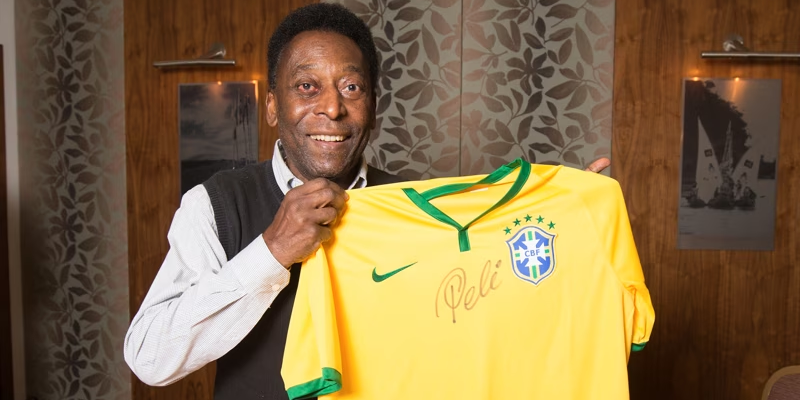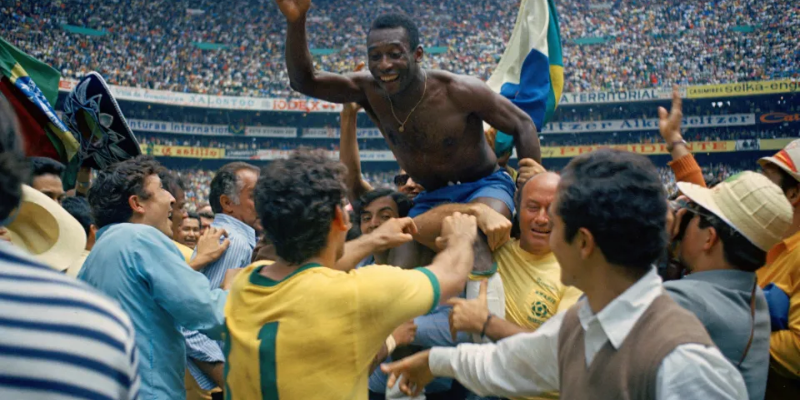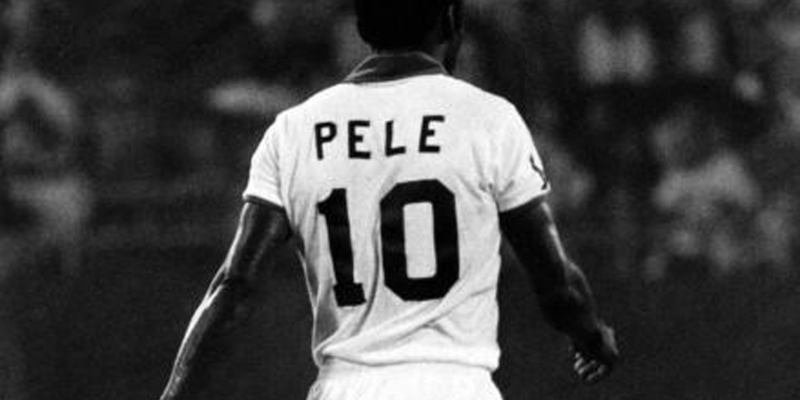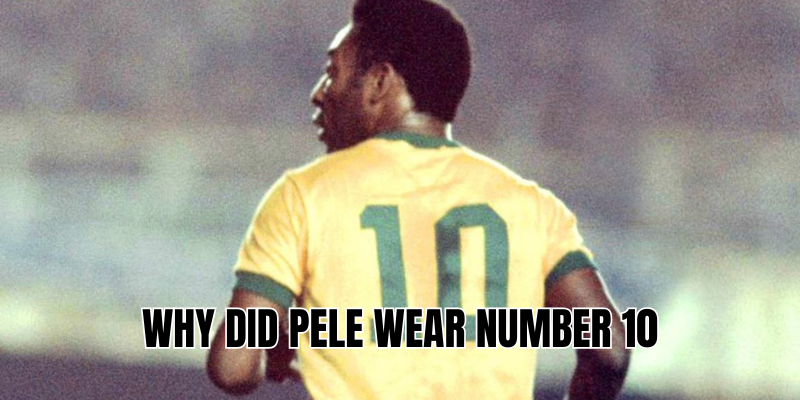Football is filled with stories that become legends, and few are as fascinating as the tale of why did Pele wear number 10. Today, QuraGoal will take you back to the roots of this iconic number and explain how a simple coincidence turned into one of the most powerful symbols in world football. More than a shirt, the number 10 became synonymous with creativity, artistry, and greatness—all because of Pelé.
The birth of number 10 at the 1958 World Cup

Pelé’s journey with the number 10 began not out of a coach’s tactical choice, but through pure chance. During the 1958 World Cup in Sweden, Brazil’s squad list was sent to FIFA without assigned shirt numbers. To solve the problem, FIFA officials arbitrarily distributed numbers to players. By luck—or perhaps fate—Pelé received the number 10 jersey.
At just 17 years old, Pelé was Brazil’s youngest player. Few could have predicted that the teenager wearing 10 would explode onto the world stage with dazzling goals, dribbles, and a World Cup title. This unplanned moment laid the foundation for the mystique that would follow.
How Pele gave meaning to number 10
Before Pelé, the number 10 carried no particular weight in football. Numbers simply indicated positions on the pitch, and 10 was not yet special. What transformed it was Pelé’s brilliance. Every time he touched the ball, he created magic. His dribbles, vision, and goals against giants like France and Sweden elevated him into a living icon.
Pelé’s performance in 1958, followed by World Cup victories in 1962 and 1970, cemented the belief that number 10 belonged to the genius of the team. Fans and clubs began associating the number with creativity, leadership, and the ability to change games.
The legacy of number 10 in Santos and beyond

Pelé wore the number 10 not only for Brazil but also for his beloved club Santos. There, he turned the shirt into a symbol of hope and dominance. With Pelé leading, Santos conquered Brazil and the world, winning Copa Libertadores and Intercontinental Cups. The number 10 shirt became the flag of the club’s golden age.
Even in the United States, when Pelé joined the New York Cosmos in the 1970s, he kept the number 10. By then, the number was no longer just a shirt—it was a crown worn by football’s king.
The evolution of number 10 after Pele

Pelé did not just wear the shirt; he inspired generations to claim it. The world’s greatest players—Maradona, Zidane, Ronaldinho, Messi, Neymar, and now Lamine Yamal—followed his footsteps in donning the number 10. Each added their own flavor to the tradition, but the root of its prestige comes from Pelé.
Today, when fans see number 10, they expect magic: dazzling skills, decisive goals, and artistry on the pitch. Clubs and national teams often reserve it for their most creative talent, the player who embodies Pelé’s spirit.
Notable heirs to the number 10
- Diego Maradona: Captained Argentina to World Cup glory in 1986.
- Zinedine Zidane: The elegant Frenchman who defined Euro 2000 and the 1998 World Cup.
- Ronaldinho: Pure joy on the pitch, reinventing tricks and smiles in Barcelona.
- Lionel Messi: The modern standard, combining goals and playmaking like never before.
- Neymar: Brazil’s current bearer of the number, connecting Pelé’s past with the present.
Symbolism of the number 10 in football
The shirt is no longer just a number. It is the symbol of artistry, responsibility, and legacy. When a coach hands a player the number 10, it means: “You are the heart of this team.” Pelé redefined what it means to be a footballer—not just a striker or midfielder, but a leader of imagination.
The number 10 has become a cultural icon beyond the field as well. Merchandise, fan chants, documentaries, and even fashion often revolve around the magic of the 10. Pelé ensured that this digit became an identity in global football.
Final thoughts
The answer to why did Pele wear number 10 is both simple and legendary: it started by accident at the 1958 World Cup, but Pelé’s brilliance gave the number eternal meaning. Through his goals, creativity, and victories, he turned the number into football’s most sacred shirt.
At QuraGoal, we believe stories like this remind us why we fall in love with football. The number 10 is more than just digits—it’s history, beauty, and a tribute to the kings of the game. Stay with QuraGoal for more timeless football stories, player biographies, and deep dives into the legends who shaped the sport.




